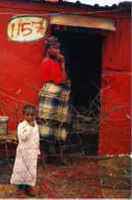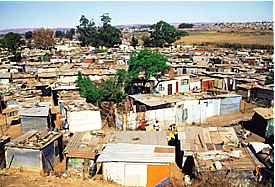On the heels of a highly publicized incident in Montreal of bullying that occurred between students of two culturally and linguistically different schools in October, 2007, as the Director of Bartimaeus services in Quebec, I was recently asked by a group of parents about the escalation of violence in schools. “There doesn’t seem like any hope for stopping violence in schools.” they said. I respectfully disagreed.
I was reminded of a terrific opportunity I had several years ago.

I had been asked to go to South Africa along with Dennis Farley, Director of Bartimaeus Inuit and First Nations Services, as part of an agreement between South Africa and Canada (Canada/South Africa Education Management Program) to provide a needs analysis and subsequent training to administrators, counsellors, and head teachers from the ninety most violent schools in Gauteng Province, where Soweto Township and Johannesburg are located.
In the same semester of that first period we were there, nine teachers had been murdered in schools and over fifty-five students had been killed on school property in the Province of Gauteng! In many of the most violent schools, teachers were not coming in to work and students as well were simply no longer attending school. It was just too dangerous. As part of our needs analysis we spent time in a number of schools, including one where a remarkable turn around had occurred over a short three-year period. As usual, we were the fortunate ones to learn amazing things.

Soshanguve is a sprawling township of windowless tin shacks and abject poverty. No designated roads, no household running water or electricity. We drove through the township, dust billowing behind us, and then over a rise, in the middle of it all, was a pristine white building surrounded by fences, with a man inside the fence, watering the grass!! This is Soshanguve High School. We met the principal, Mr. Tsipane, who showed us around the school. The students were in uniform, they were polite, and showed great respect to Mr. Tsipane throughout our afternoon there.

When we told him how surprised we were to see this pristine building in the midst of such poverty and how amazing it was to see a man watering grass in the midst of dust and dirt, Mr. Tsipane simply smiled and told us, “I grew up not far from here. I cannot control what happens outside of my fence, but I can control what happens inside. I want these learners (students) to know that whatever they may be coming from on a daily basis at home and in their community, they are coming to a place that is both safe and secure. They must know that there is opportunity, and I and my teachers will be the example to them.”
In order to turn the school from a place of violence and fear, Mr. Tsipane had done a series of simple but remarkable things.
He met with gang leaders and established the school property as a “safe zone.” Gang members and their brothers and sisters would not be subject to acts of violence during school hours.
He established a morning “check-in” for weapons, name tags for weapon owners, and an afternoon “check-out” system. Weapons “checked-in” for the day, included machete–s, knives, and guns and bullets. Owners picked them up at day’s end.
He established peer mediation programs and adult mediation programs for issues between students and between teachers and students.
He invited grandmothers to come to school to weave (a favourite pastime). Their presence alone reduced incidents of violence.
He established parent patrols within the school. With 85% unemployment, volunteers were plentiful. Those who agreed to come, but had alcohol problems, were invited to patrol in the morning, before drinking began.
Clean drinking water and small amounts of food were available for anyone who was thirsty or who hadn’t eaten, including adults in the school.
Evening literacy projects were started so community adults who couldn’t read (the community majority) were invited to learn.
There was no graffiti anywhere in the school. Everyone in the school had chores to keep it clean.
Barbed wire around the perimeter ensured no one could cause destruction overnight, and no dangerous intruders could gain entry during the day. A harsh but necessary reality.
Students with babies were able to bring them to school every day.
Student council was a powerful and meaningful body who shared decision making responsibilities, including teacher contract renewals!
The governing board (based on the Qu–bec model) were democratically elected and shared policy decisions with management and teachers.
Teachers were an integral part of decision making as well. Respect for all learners and their parent’s was a fundamental principle for all teachers.
These and other steps were poignant examples of the impact of positive change in an impossibly difficult situation. Soshanguve High School radically reduced drop-out rates, teacher absenteeism was brought to within regular education department norms, violence was dramatically reduced, and those learners, teachers, and parents we met seemed genuinely at ease within the school.

As best stated by Mr. Tsipane, “Soshanguve High School is an oasis. A place where we all can live safely and with hope.”
Creating peaceful schools? If it has been done, it can be done–anywhere.